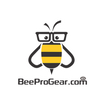
Introduction:
Beekeeping is a rewarding hobby and a vital part of sustainable agriculture. However, one of the challenges beekeepers face is the threat of pests and diseases that can endanger their beloved bee colonies. In this guide, we'll explore common bee pests and diseases, preventive measures, and effective management strategies. Let's ensure your beehives thrive with optimal health.
Identifying Common Beehive Pests
Beehive pests are a constant concern for beekeepers, and understanding their identification and behavior is the first step in managing them. Here are some common beehive pests:
Varroa Mites: These tiny parasites are a significant threat to bees. Their presence can weaken and kill entire colonies.
Hive Beetles: Small black or brown beetles that can damage combs, honey, and larval bees.
Wax Moths: These pests lay their eggs in beehive combs, leading to significant damage if left unchecked.
Recognizing Beehive Diseases
Bee diseases can also wreak havoc on your hives. Identifying these diseases early is crucial for effective management. Here are some common bee diseases:
American Foulbrood: A bacterial disease that infects bee larvae and causes foul-smelling, slimy brood.
Nosema: A microsporidian parasite that impacts a bee's digestive system and overall health.
Chalkbrood: This fungal disease leads to the mummification of bee larvae.
Prevention Strategies
Preventing hive pests and diseases is the best way to protect your bees. Here are some essential strategies:
Hive Placement: Choose a location that provides your bees with ample sunlight and good ventilation.
Hive Maintenance: Regularly inspect and maintain your hives to prevent potential infestations.
Sanitation: Keep your equipment and hives clean to reduce the risk of disease transmission.
Treatment and Management
Sometimes, despite your best efforts, pests and diseases can still affect your hives. In such cases, timely and effective management is critical. Methods for treatment include:
Chemical Treatments: These include miticides, antibiotics, and organic options. Always follow label instructions.
Non-Chemical Options: Mechanical methods, like using screened bottom boards or powdered sugar dusting, can be effective.
Integrated Pest Management (IPM)
Integrated Pest Management (IPM) is a holistic approach to pest and disease control that focuses on prevention, monitoring, and treatment. By combining various strategies, you can reduce the risk of infestations and diseases in your beehives.
Case Studies and Success Stories
Real-life examples of beekeepers who have successfully managed pest and disease issues can provide valuable insights. Learning from their experiences can help you protect your colonies effectively.
Conclusion
Protecting your bee colonies from pests and diseases is an essential aspect of successful beekeeping. By understanding the common threats, adopting preventive measures, and being prepared for effective management, you can ensure the health and longevity of your beehives. Stay informed, stay vigilant, and your bees will thrive.


